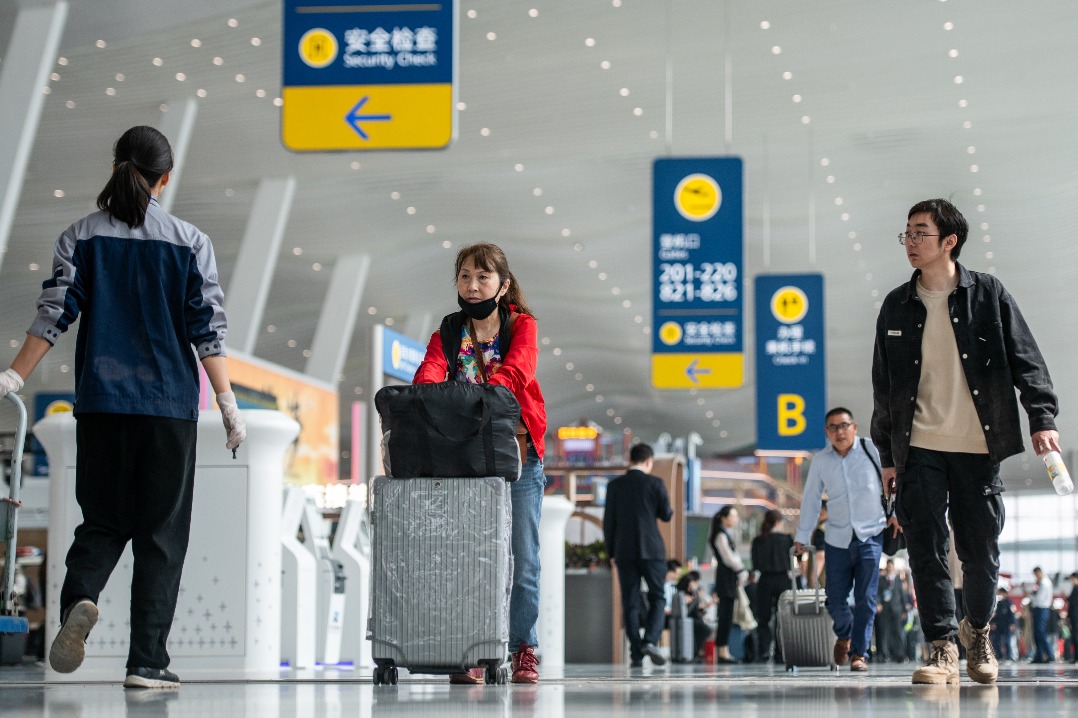Latin America not the US' backyard
By Carlos Aquino | China Daily | Updated: 2019-04-17 07:41

China and Latin American countries are becoming increasingly linked through trade and investment. China is the second-biggest trade partner of the region-the United States being the biggest. But if Mexico, which has a huge trade volume with the US, is excluded from the equation, China would be the biggest trade partner of Latin America.
Besides, China is becoming the biggest aid donor in and lender to several Latin American countries, and an increasing number of Chinese tourists are visiting Latin America.
Urgent need to build infrastructure facilities
Latin America has plenty of natural resources but most of the region's countries have not been able to put those resources to industrial use, because the region's manufacturing sector does not have the capacity to transform those resources into more value-added goods. To acquire that capacity, the region needs to build adequate infrastructure facilities such as highways, seaports, airports, power plants and telecommunications networks. And the lack of electricity is the main hindering factor for establishing industries in many places in Latin America.
The cost of transporting goods is also very high in the region, not only for moving goods within the countries, but also for exporting them. This compromises the competitiveness of Latin American goods in the international markets. And due to the geography of the region, countries in the Andean region and the Amazon basin have not been able to build a comprehensive transportation network.
In this sense, China's offer to the region to help build those infrastructure facilities is welcome. China can do that because it has the financial means to provide loans to the region's countries, its companies have built the extensive infrastructure networks that China boasts, and it is ready to help other countries. For example, of the 10 busiest seaports in the world, six are on the Chinese mainland: Shanghai, Shenzhen, Ningbo-Zhoushan, Guangzhou, Qingdao and Tianjin. China has also built more than 29,000 kilometers of high-speed railways-more than half of the world's total.
Second forum testifies BRI's rising importance
Already, 17 Latin America countries have joined the Belt and Road Initiative and the second Belt and Road Forum for International Cooperation to be held at the end of this month in Beijing will testify to the growing importance of the initiative in the world, because more countries and heads of state or government are expected to participate in it than the first one two years ago.
China has become the defender of an open environment for trade and investment while the US, which used to play that role, is becoming more closed and prefers unilateral action to multilateral negotiations. The US is also building a wall along its border with Mexico. By contrast, China is eager to sign free trade agreements with other countries in the region and is expanding the FTAs it has with Peru and Chile.
International trade and investment are becoming more important for the region, and their importance will enhance once the required infrastructure facilities are built.
In particular, Latin America has benefited from Chinese industries' strong demand for the region's raw materials such as minerals, oil, wheat and soybeans. The growing middle-income group in China is demanding other things, too, such as wine, fruits and some manufactured goods that the region could provide. So Latin America needs to increase the production capacity of these products. And to do that, it has to attract investments-and build modern infrastructure facilities to sustain those investments.
More Chinese companies building infrastructure
There is already a noticeable increase in the participation of Chinese companies in infrastructure projects in the region. For example, China Railway 20 Bureau Group won the international bidding last year for improving, maintaining and operating a highway in northern Peru, and another Chinese company will be in charge of making some rivers navigable in the Amazon region for about $95 million. In January, it was announced that Cosco Shipping will participate in the building of a huge seaport in Chancay, a city north of the Peruvian capital of Lima, with an investment of $2 billion.
Another Chinese company, China Three Gorges Corporation, is negotiating to invest about $319 million in a hydroelectric power, although Peru has not yet officially signed the memorandum of understanding for the Belt and Road Initiative.
If the US is unwilling to deepen its relationship with Latin America by setting up barriers, it should let other countries such as China to do that. China and Latin America both have benefited from their increasing trade and investment relations, and in turn benefited the world economy. The building of better infrastructure facilities in Latin American countries will bolster their trade and investment relations with other countries and thus expand the region's economy, which will benefit the US, as its companies can export more products to and increase their investments in Latin America.
The author is director of the Center of Asia Studies at the National University of San Marcos in Lima, Peru. The views don't necessarily represent those of China Daily.























